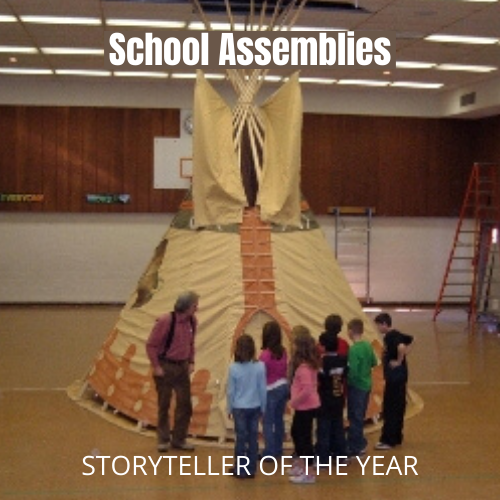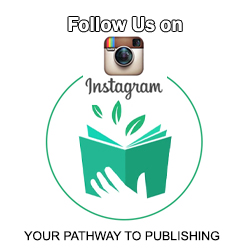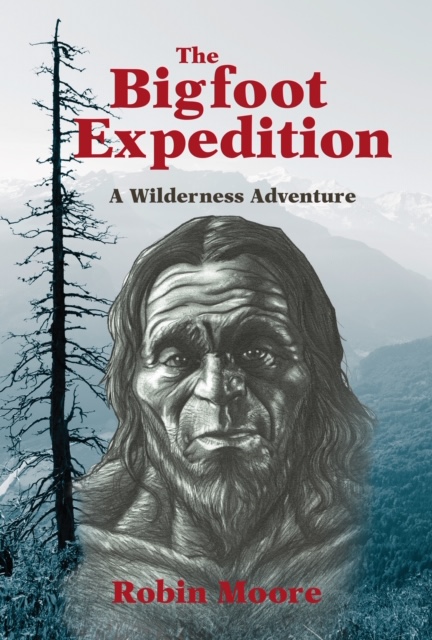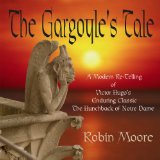Robin Moore...Children's Book Author and Storyteller
Where will your imagination take you?
Contact and Bio
To Contact Robin directly, call him at 215-249-3437, e-mail at This email address is being protected from spambots. You need JavaScript enabled to view it., write him at Box 1311, Doylestown, PA 18901 or check him out on Amazon at his Author Page: amazon.com/author/robinmoore
Robin Moore has made his full-time living as an author and storyteller for more than 30 years. He has told stories to more than one million people and has presented more than 5,000 storytelling programs at schools, libraries, conferences, festivals, on radio and
Robin is owner of Groundhog Press, an independent publishing house which produces books and recordings Celebrating the Oral Traditions. Robin holds a Bachelor's Degree in Journalism from The Pennsylvania State University and a Master's Degree in Oral Traditions from The Graduate Institute. He serves on the faculty of TGI's Oral Traditions and Writing Program in Bethany, CT.
Robin grew up in the mountains of Central Pennsylvania, where his Scots –Irish ancestors lived for more than 200 years. He served as a combat soldier in Vietnam and worked as a newspaper reporter and magazine editor before becoming a full-time children's book author and traveling storyteller.
Teacher Resources
Imaginative Listening: Learning the Language of the Dream
I have told stories to more than a million children. For 27 years I have had the pleasure of earning my living as a visiting author and storyteller in Pennsylvania's public and private schools. Of all the rooms in a school building, I feel most at home in the library,
perhaps because this is the most natural place for storytelling. When I was invited to write an article for this "Collaborations" issue,
my original intention was to examine how visiting artists can work with media specialists to make stories come alive in a library setting.
Then I realized that there is a much deeper, more important, collaboration which goes on in schools every day, one which we hardly ever speak about. I am talking about the collaboration between speaker and listener.
Whether a story is being told from memory, recounted from personal experience or read aloud from the printed page, it is the interplay between speaker and listener that makes the story come alive. Let's take a look at the storytelling equation and see what we can learn about how the ancient art of storytelling can be a powerful and evocative teaching tool.
What is Storytelling, Anyway? Everyone knows what storytelling is. We do it naturally and spontaneously, every day of
our lives. For this reason, the storytelling process is often invisible and passes without our notice. Please consider this excerpt from a
1992 Position Statement from the National Council of Teachers of English, crafted by the NCTE Committee on Storytelling (www.ncte.org): "What is storytelling? Storytelling is relating a tale to one or more listeners through voice and gesture. It is not the same as reading a story aloud or reciting a piece from memory or acting out a drama—though it shares common characteristics with
these arts. The storyteller looks into the eyes of the audience and together they compose the tale...Each listener, as well as each teller, actually composes a unique set of images derived from meanings associated with words, gestures and sounds. The experience can be profound, exercising the thinking and touching the emotions of both teller and listener."
Together, they compose the tale—what an elegant phrase! Once we understand this simple but powerful idea, we see that the story is a shared creation between teller and listener, a truly imaginative collaboration. When you are telling children a story, their imaginations leap forward to join yours. You are all taking the journey together, to a world normally accessible only in dreams. In the language of the Chippewa-Cree Indian people, the word for "to tell a story" and the word for "to dream" come from the same linguistic root. In stories, we learn the language of the dream. So when you say to a child, "Let me tell you a story," what you are really saying is,
"Dream with me. Let's dream a story together."
Psychologists have confirmed that when we listen to a story we are in the same psychological state as we are when dreaming. This imaginative listening is a vital source of creativity and an important portal to learning for subjects across the curriculum. The authors
of the NCTE paper note, "Story is the best vehicle for passing on factual information. Historical figures and events linger in children's minds when communicated by way of narrative...Facts about how plants and animals develop, how numbers work, or how government influences history—any topic, for that matter—can be incorporated into story form and made more memorable if the listener takes the story to heart."
Storytelling can be many things. But it is, first and foremost, a tool for teaching. Cultures all over the world have constructed elaborate mythologies as a way of passing along the core values and hard-won wisdom of past generations. Because the message is embedded in the story, it is more easily accepted by the listener. A story honors the dignity of the learner, allowing the individual to make connections and extract meaning in a way that makes sense to him or her. This is why tacking a moral onto the end of a story effectively cancels out the power of the tale. Here's a story for your rumination, see what meaning you can derive from this traditional tale:
"Long ago, in Old Japan, a young man left his family and went to a monastery high in the hills to study with a revered Buddhist monk. His first few weeks passed reasonably well but the young man soon grew restless and asked to speak to his teacher privately. The old man invited him to tea and sat across from him, smiling. "I mean no disrespect," the student said, "But I must confess that I am
disappointed in my studies."
The old man raised his eyebrows. "Why is that?" he asked.
"Each time I come to hear you speak, I hope to learn something. But all you do is tell us stories."
The teacher threw back his head and laughed. "Go to the river," the old man instructed, "and bring me some water."
The student thought it was strange request, but he complied all the same. He went to the monastery kitchen and took down a large copper cooking pot. Walking to the water's edge, the young man dipped the pot into the rushing river. Carefully, he carried the
sloshing liquid back to the monastery. When he set the brimming pot before his teacher, the old man smiled.
"Why have you brought me this pot?"
the old man inquired, "All I wanted was water."
How to Begin?
If you've read this far, it probably means that you are interested in the art of storytelling and how you can expand your natural storytelling abilities. It goes without saying that you must have a story to tell. Even if you only know a handful of stories that you truly love, you will be surprised at how often you use them. Perhaps the best advice for beginning storytellers is to never tell a story that you do not love. If you find your story compelling, your listeners will as well.
But how to find these stories?
Fortunately, there are many wonderful storytelling resources, within easy reach. The first stop is August House Publishers www.augusthouse.com, the premier source for storytelling resources in the country. Start out with David Holt and Bill Mooney's "Ready to Tell Tales". This fantastic series is a collection of tried and true folktales, ready to lift right up off the page and begin telling!
Margaret Reid MacDonald's many collections of multicultural tales from around the world as well as books by Heather Forrest, Don Davis and many others offer story collections ideal for tellers of all abilities and confidence levels.
For an in-depth discussion of the ideas in this article, see my book, "Creating a Family Storytelling Tradition" Little Rock,Arkansas:
August House Publishers, 1991. If you want to get started right away, go to the web. The 5,000-Pound Gorilla is Tim
Sheppard's Storytelling website www.timsheppard.co.uk. This site offers links to an astonishing array of international and multicultural storytelling resources on every imaginable topic as well as a portal to The Storytelling Ring.
While you are cruising the web, be sure to visit the National Storytelling Association website at http://www.storynet.orgfor an entrée
to the world of storytelling enthusiasts. You will also find a listing of regional storytelling organizations and a directory of storytellers in your area.
Last but not least, keep your ears open to the stories being told around you every day. The oral tradition is alive and well, as anyone who has ever spent time in the teacher's lounge can tell you! Listening is the keything.
Once you find a story you'd like to tell, how do you breathe life into it, make it your own? There is only one way: By telling it. Over and over and over. Some thoughtful preparation is good. But no amount of rehearsal or introspection matches the experience of simply telling the tale before a living, breathing audience. For librarians, an audience is always near at hand.
Remember that every story has four parts: The invitation, the beginning, the middle and the end. The invitation is crucial. As
storytellers, we can't just barge into our listener's imaginations; we need to be given permission to enter. Once this ancient contract between teller and listener is sealed, the game is on. If this arrangement is not negotiated successfully, we are literally wasting our breath.
Each culture has ritualized ways for transacting this business. It can be as simple as asking: "Would you like to hear a story?" Or it can be more subtly implied by the words, "Once upon a time, the days when animals could talk..." or "Long ago, in a faraway land, there lived a King and a Queen in a castle...." On hearing these words, the listener signals by facial expression and posture that he or she is entering into the collaborative enterprise of story-making. From there on out, your task is to step out of the way and act as the
imaginative guide until the story is over. Once children become accustomed to the keys to story performance, they enter into the task with relish and delight. And why not? This process is written in our bones.
It is important to start and end well. As in aviation, the take-off and landing are crucial to the success of the flight. I always memorize the first three and the last line of a story. This is my assurance that I will begin and end strongly. In between, I am relating the images of the story as they occur to me, moment by moment, trusting my listeners to create their own, parallel story from images of their own design. While a great deal has been written about the speaking side of the storytelling equation, not much has been written about the importance of the listener, or about listening skills in general. I am fortunate to serve on the faculty of a graduate school which awards a Masters Degree in Oral Traditions www.learn.edu. The first thing we teach is listening skills. Once the graduate students realize the powerful effect that intelligent, compassionate listening can have upon every aspect of life; they become advocates for the aural, as well as the oral tradition.
Just as Howard Gardner has posited with his influential theory of multiple intelligences, researchers have discovered that each of us have individual listening styles which determine the type and quality of information we receive each day. Once you know these listening styles and can spot them, you have learned a powerful diagnostic tool for figuring out how to communicate successfully, both at home and at school. For a comprehensive view of thisresearch, read "Listen Up" by Dr. Larry Barker and Dr. Kittie Watson. New York: St. Martin's Press, 2000.
The website of the International Listening Association provides a link to current research about how listening skills can be improved. There is also a wonderful page of quotes about the power of listening. Here are a few of my favorites:
"What most kids need is a good listening to."
"Listening begins with the willingness to see the world through the eyes of another."
"Most of the problems we now experience could be prevented or entirely eliminated through skillful and empathetic listening."
Perhaps the greatest benefit of the collaboration between teller and listener lies in the healing power of story. It has been said that we cannot hate someone when we know their story. In a multicultural world which becomes more complex with each passing year, this is
a skill well worth learning.
Here's one final story:
An anthropologist had spent years studying a tribe of indigenous people who lived deep in the Amazon Rainforest. These were people with no written language and no modern technology whatsoever. This was a totally oral culture, where story, song and poetry were the nightly entertainment and instruction for young and old alike. On one of his research trips, he decided to bring along a gas-powered generator and a television with a satellite dish so that the villagers could experience the wonder of electronic entertainment.
He set the television on a stump in the center of the village and started up the generator. Within moments, people gathered to see what all the excitement was about. On the first night, everyone in the village sat transfixed before the flickering screen. No one went to gather firewood or feed the babies or bring water from the river. For the next week, virtually every normal activity of village life was replaced by the desire to watch the images dancing across the screen. But, as time went by, people grew restless and drifted away. In the second week of his experiment, the scientist was astonished to see that even though the television was on all night, no one was watching it. Then, through the trees, he saw the flickering of a flame. As he drew closer, he saw that the people who had been watching the television so intently were once again gathered around the village storyteller as he recounted his tales from
the days when humans and animals spoke the same language.
The anthropologist drew one of the villagers aside and asked him why no one was watching the television.
"We do not need it," the man said, "We have our own storyteller."
The anthropologist smiled patiently. "Yes. But don't you see that television knows many more stories than your storyteller."
The villager thought for a moment, then smiled.
"That is true," the man said. "the television knows more stories than our storyteller. But our storyteller knows us."
In an era when most of the stories our children hear originate from a shadowy world where a thousand faceless voices are broadcast by an elaborate network of electronic circuitry, it is refreshing to know that in some places, such as the school library, a child can still hear the warm and soulful sound of a single human voice, speaking directly to them, helping them learn the language of their own dreams.
Biography
Robin Moore spends about 100 days a year on the road, visiting Pennsylvania school children, giving storytelling performances and writing workshops. He is author of more than a dozen books, including "The Bread Sister Trilogy" a series of historical fiction novels about women on the Pennsylvania frontier. He was named PSLA "Author of the Year" and Storytelling Magazine's "National Storyteller of the Year". He holds a Masters Degree in Oral Traditions and serves on the faculty of The Graduate Institute at Mitchell
College.
For more information, visit www.robin-moore.com
Other Types of Programs Offered
Single Performance: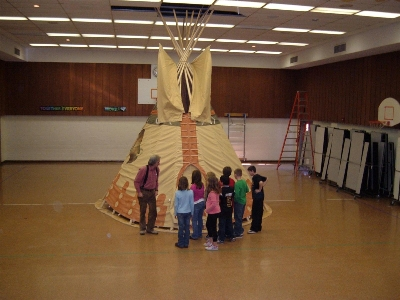
Robin offers a single 45-minute performance followed by a book signing. Performances include traditional and original stories, woodcraft and historical living skills, music and audience participation. See below for more information on types of performances offererd.
Fee: $375
"While Robin was speaking, the room was silent and the intense expressions on everyone's faces showed that they were living within, rather than just watching, the stories."
Dr. Maureen Sullivan, Academy of Natural Sciences
Philadelphia, PA
Half Day Performances:
If you are interested in more than one performance, check with Robin to see if you qualify for Half Day Rate. You can book as many programs as you like in a half day. This can be any combination of performances, workshops or living history programs.
Fee: $675
Full Day Performances:
This plan offers maximum flexibility for program planner. Schedule the full day any way you like.
Fee: $975
Program Content:
Programs for Children
For libraries, camps, and scouting groups, Robin offers memorable programs which combine traditional stories with demonstrations of old-time living skills, primative musical instruments and woods lore from the natural world.
Programs for Families
Parents and their children enjoy hearing some of Robin's family stories and learning how they can create their own family storytelling tradition. Robin also tells stories from his roots in the mountains of Central Pennsylvania, where his Scots-Irish Frontier ancestors have lived for more than 200 years.
Programs for Adults
While most of Robin's Programs are designed for students and teachers, parents and their kids, he also tells stories and presents workshops and gives keynote presentations for adults.
Robin has taught storytelling and writing on an undergraduate and graduate level for ten years at The Graduate Institute. He serves on the faculty of the Oral Traditions Program at The Graduate Institute at Mitchell College in New London, CT. His unique approach to story creating has been outlined in his audio recordings "Awakening The Hidden Storyteller"(Recipient of The Parent's Choice Award) and "The Natural-Born Writer" (Named A Top Audio Recording of the Year by Publisher's Weekly.)
He has performed at the Exchange Place of the National Storytelling Festival, The Philadelphia Folk Festival, The Kimmel Center for the Performing Arts, The National Liberty Museum, The Academy of Natural Sciences, The Connecticut Storytelling Festival, The Vancouver Storytelling Festival and numerous regional performance venues.
He has been a featured presenter at The National Storytelling Conference, The Keystone State Reading Conference, The Pennsylvania School Librarian Conference and many Children's Literature Conferences and Historical Festivals over the last 25 years.
Robin has been widely-acclaimed for his heart-rending performance of: "Vietnam: A Soldier's Story"
Robin comes from a long line of veterans, stretching all the way back to the Civil War. When Robin was 19 years old, he was a combat soldier in Vietnam. This is his tribute to Billy Reid, the man who saved his life in the jungle. Robin tells the story of their thirty-year friendship and their struggles to heal from the ravages of our nation's longest and most unpopular war. Performance is followed by a story circle in which everyone is welcome to share a memory of veterans and their families.
"I was really touched by Robin's story of the Vietnam War. It became real as he told it. He faithfully reported what he experienced, he took the unconscious and made it conscious. His story could have been my story if I had not gotten into the Army Reserves during 'Nam. Robin is a true healer who heals with this soldier's story each time it is told. What is more, I realize now that telling my stories can help others to heal."
--J.R.
Minister and Veteran
Milford, CT
Colleges and Universities
Juggling his roles as author, teacher and performer, Robin's presentations to both undergraduate and graduate students leave them with greater confidence in their own imaginative abilities.
"Robin Moore makes stories come alive like no one I have ever seen. He has presented to my university classes over the years and he has stimulated by students to both write and speak much more effectively. He has a knack for getting students past that self-conscious stage that so inhibits their creativity. He actually makes them WANT to communicate in the first place and provides a role model for how to do it well both in writing and speaking. And to top it off, he makes it just plain fun. He's worth his weight in pedagogical gold."
--Dr. Jim Hamilton, Pennsylvania State University
Mont Alto, PA
" Thank you for coming to King's College and sharing your many gifts as author, teacher and master storyteller with our community. The performances were truly an exquisite blending of images, gesture and the spoken word, which fired the imagination, re-kindled memories and helped all present to reclaim the richness and power of story in their lives. Numerous people commented about the power of your work and the impact of the images conveyed through your stories, to teach, to inspire, to uncover lost truths, to raise questions about life and its mysteries. Our lives have been enriched in the process."
--Bob Shearn, Campus Ministry
King's College, Wilkes Barre, PA
Testimonials and Reviews
Check out Robin at Pottstown Elementary School
"While he was speaking, the room was silent and the intense expressions on everyone's faces showed that they were living within, rather than just watching, Robin's stories."
--Dr. Maureen Stanton, Academy of Natural Sciences
Philadelphia, PA
"Robin awakened the imaginations of my fourth graders with his enthralling tall tales and delightful stories of growing up in the Pennsylvania wilderness. They were thrilled to don authentic frontier clothing and amazed to learn about the hours of labor that went into making them. Robin truly brought history to life for my students!"
--Jennifer Todd, Humanities Teacher, Hillcrest Elementary School
Holland, PA
"Robin Moore ranks with the best of today's professional storytellers. His ability to portray characters with the subtle use of voice and gesture as well as his talent for involving audiences is second to none on the East Coast."
--Kenneth Goldstein, Chairman, Department of Folklore
University of Pennsylvania, Philadelphia, PA
"Robin is a true artist of the spoken word. I have never seen a group of students so completely captivated by a performer. They were riveted on his every move and expression. I have a long waiting list for his 'Maggie' books"
--Barbara Murphy, Librarian, Rogers Elementary School
Glenshaw, PA
"He performed magic inside every child, and beyond that, taught them a skill of imaging which will enrich their lives forever."
--Reina Gapczynski, Principal, Greenwich Elementary School
Greenwich, NY
"There is not a year that goes by that I do not share Robin's story collections with my students. Without a doubt, the students' two favorites are 'The Cherry Tree Buck' and 'Hairy Woman'. That's all it takes and the books never return to the shelves until the end of the school year."
--Elizabeth McChesney, Greenville Area Schools
Greenville, PA
"Robin Moore's historical fiction novels and collections of Pennsylvania folklore are among the top read-aloud books selected by PA school children and their teachers."
--Keystone State Reading Association
“Robin’s performances can only be described by superlatives. He does not just entertain students. He interacts with them in a way that leaves each child with a memorable experience. The spirit, ethnusiasm and imagination which characterize Robin’s skill are present in the school long after he has left. What better gifts can a storyteller give his audience?”
Penn Valley School, Penn Valley, PA

